Cucumbers
25 March 2022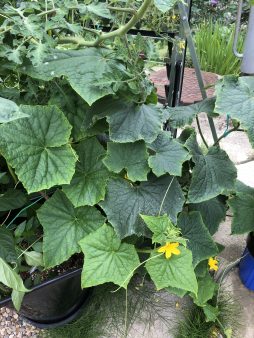
Cucumbers have taken me several attempts to get a good crop. For years I’ve bought seeds, nurtured seedlings, planted them in pots or bags in my greenhouse and got one or two solitary cukes as my reward. I knew I must be doing it wrong but couldn’t quite work it out. Judging by the tiny roots on the plants at end of the season, I didn’t think I was depriving them of space, but obviously I was depriving them of something.

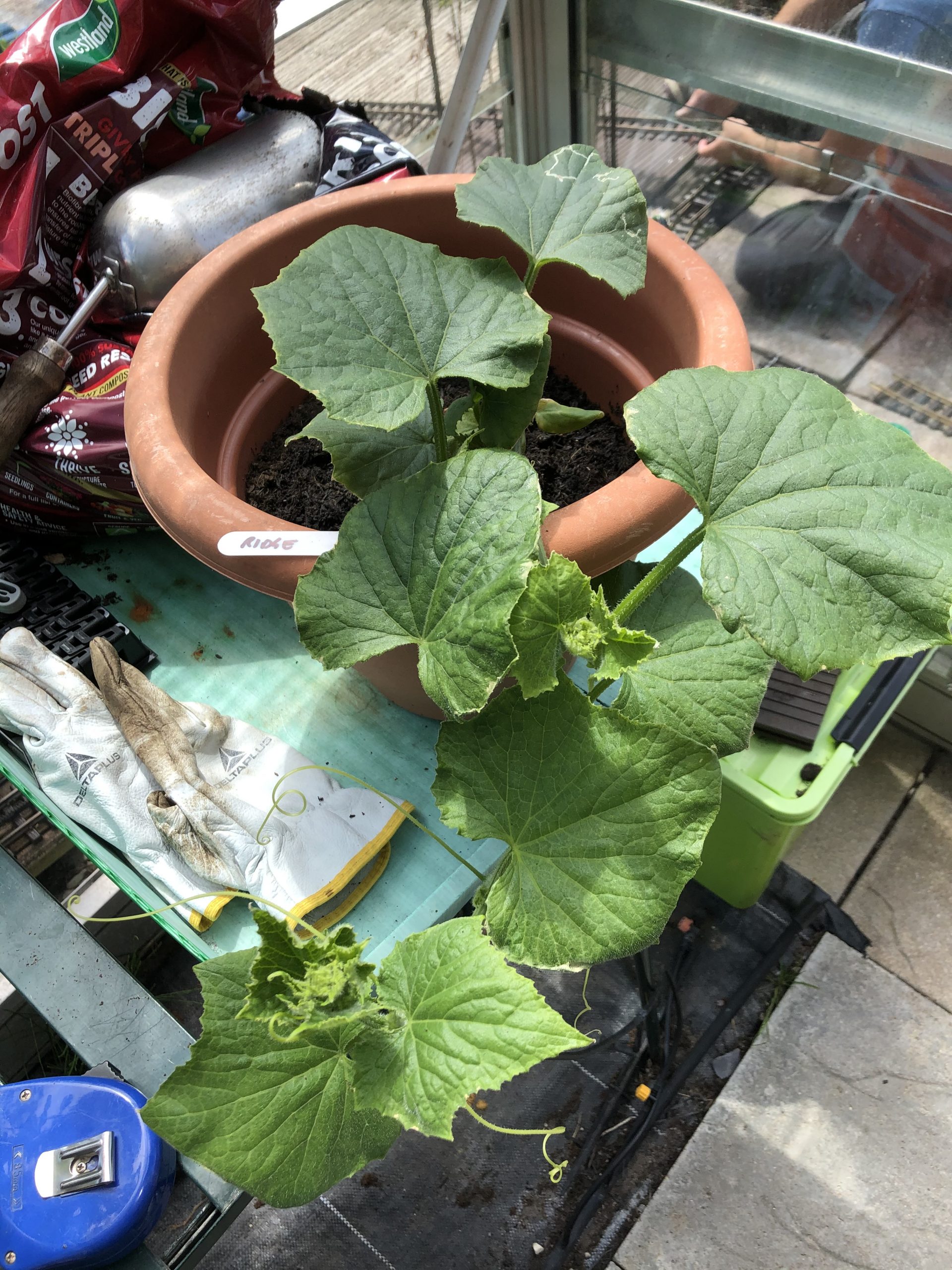
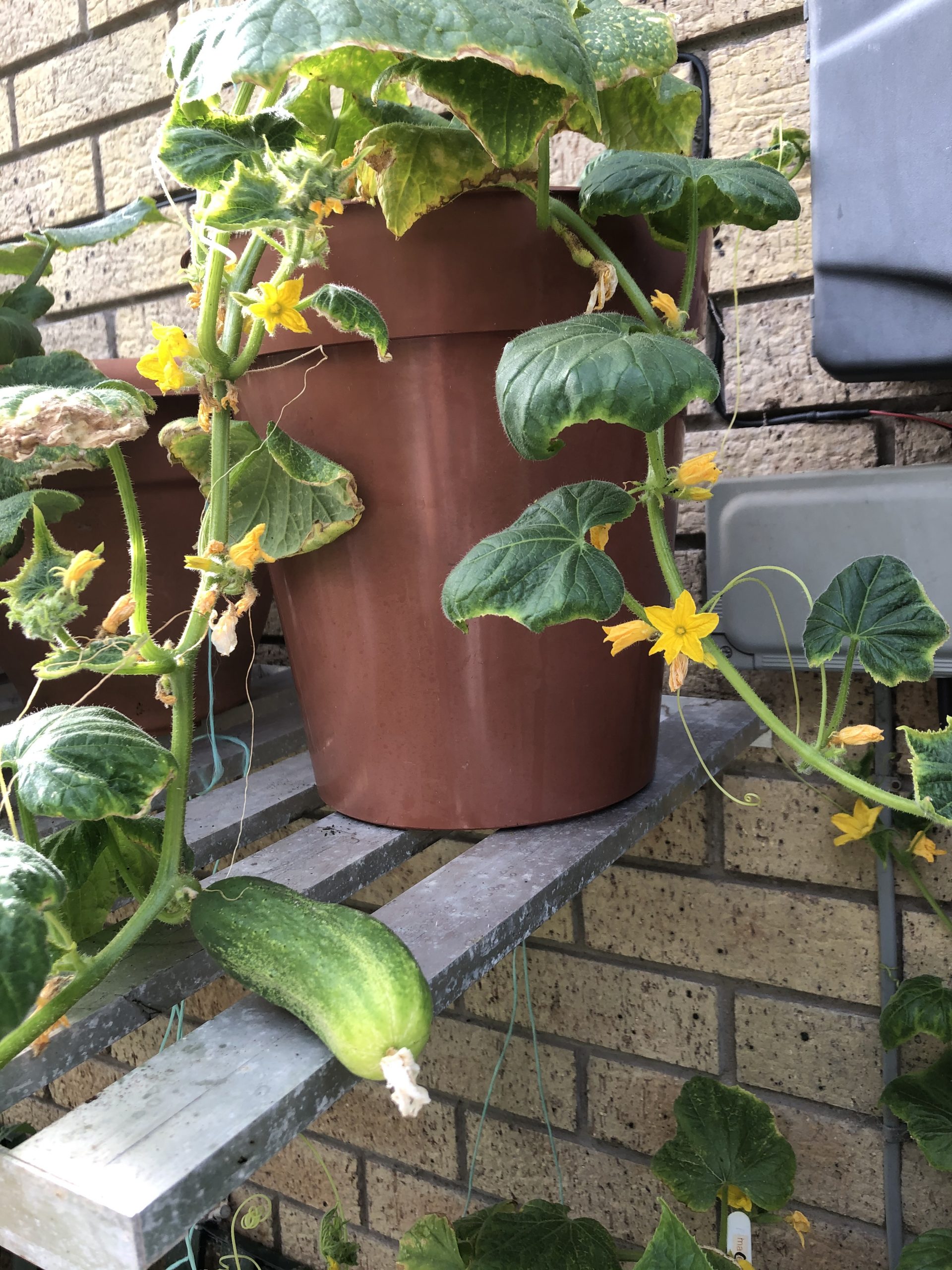
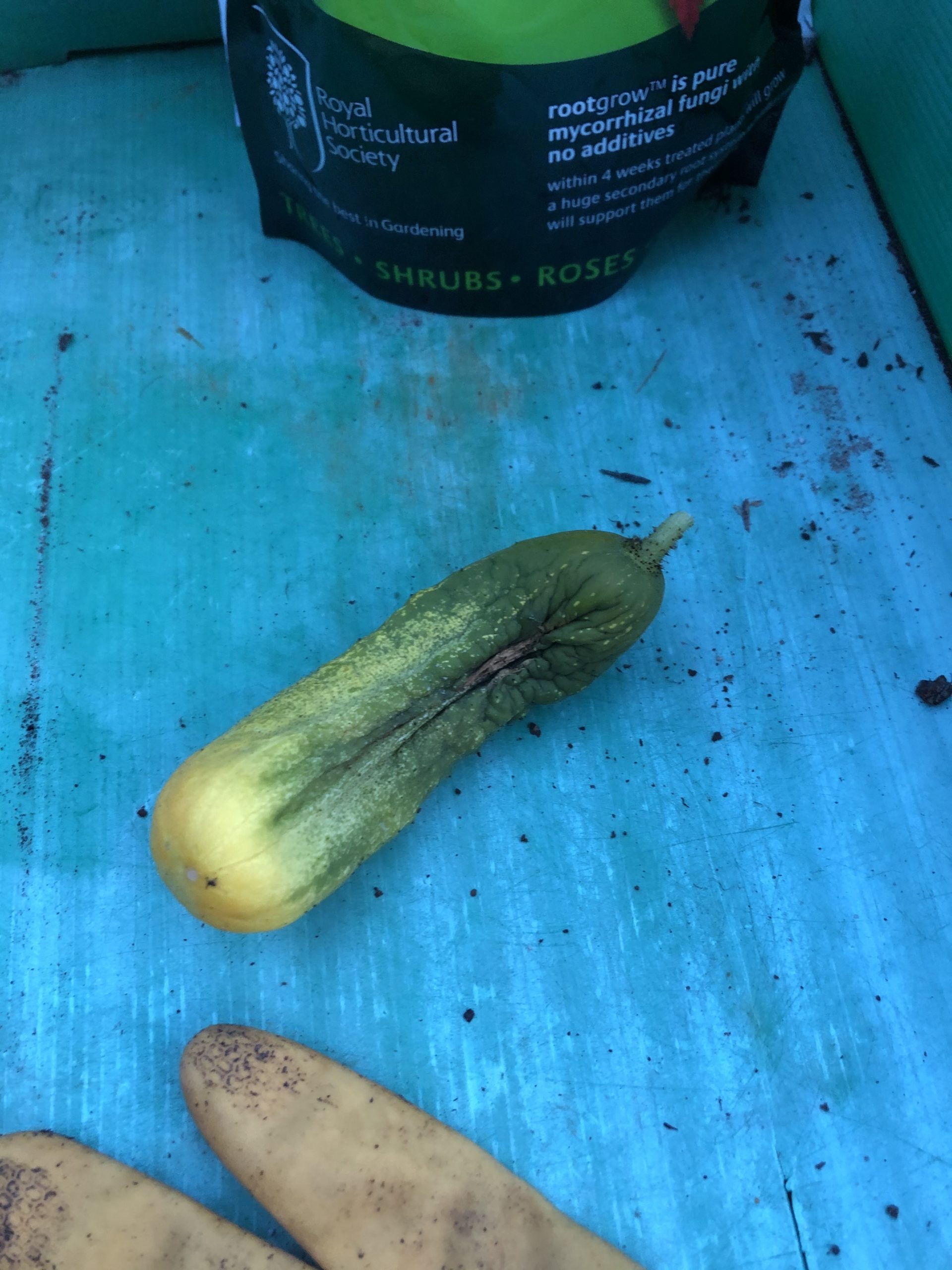
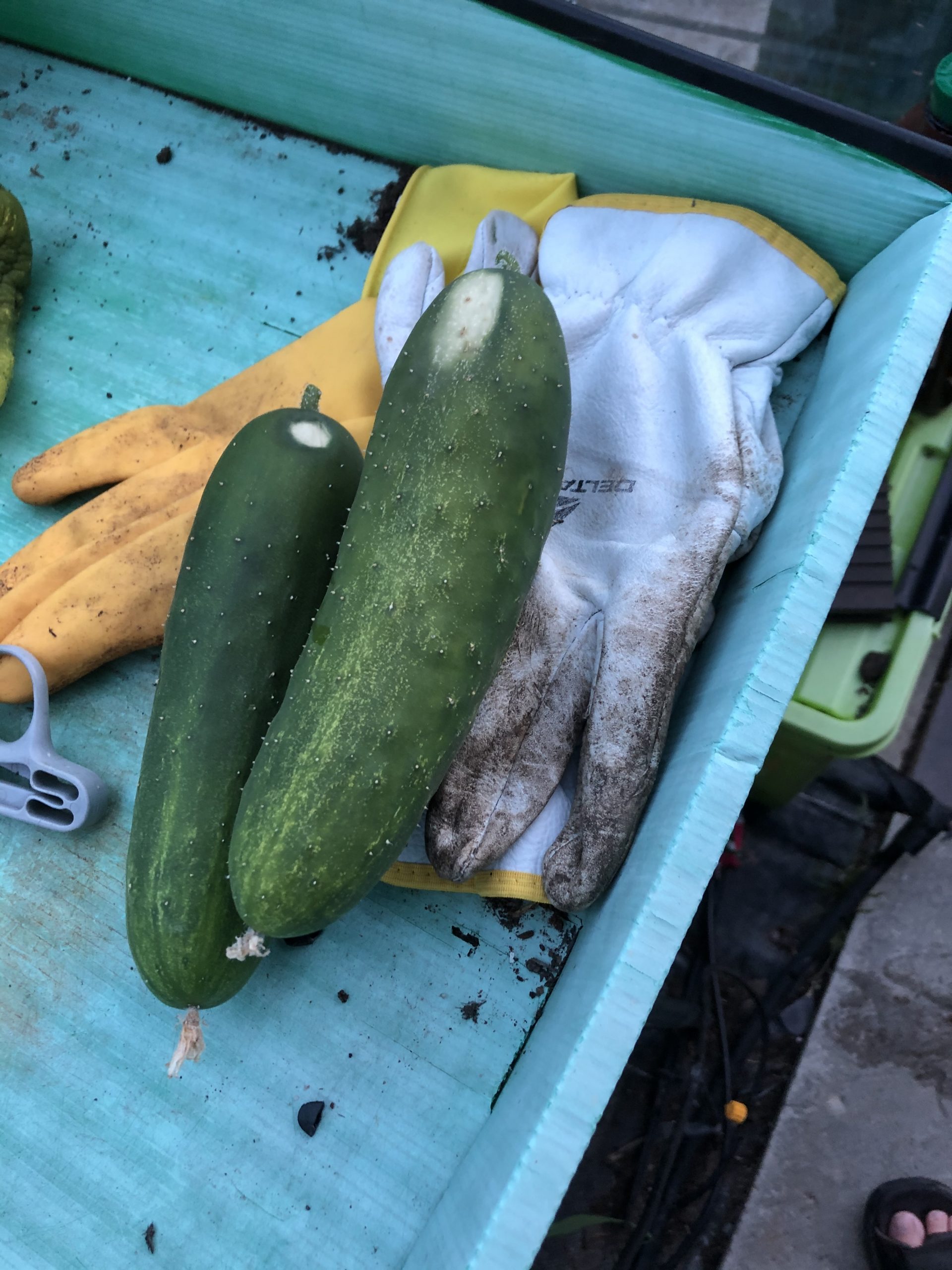
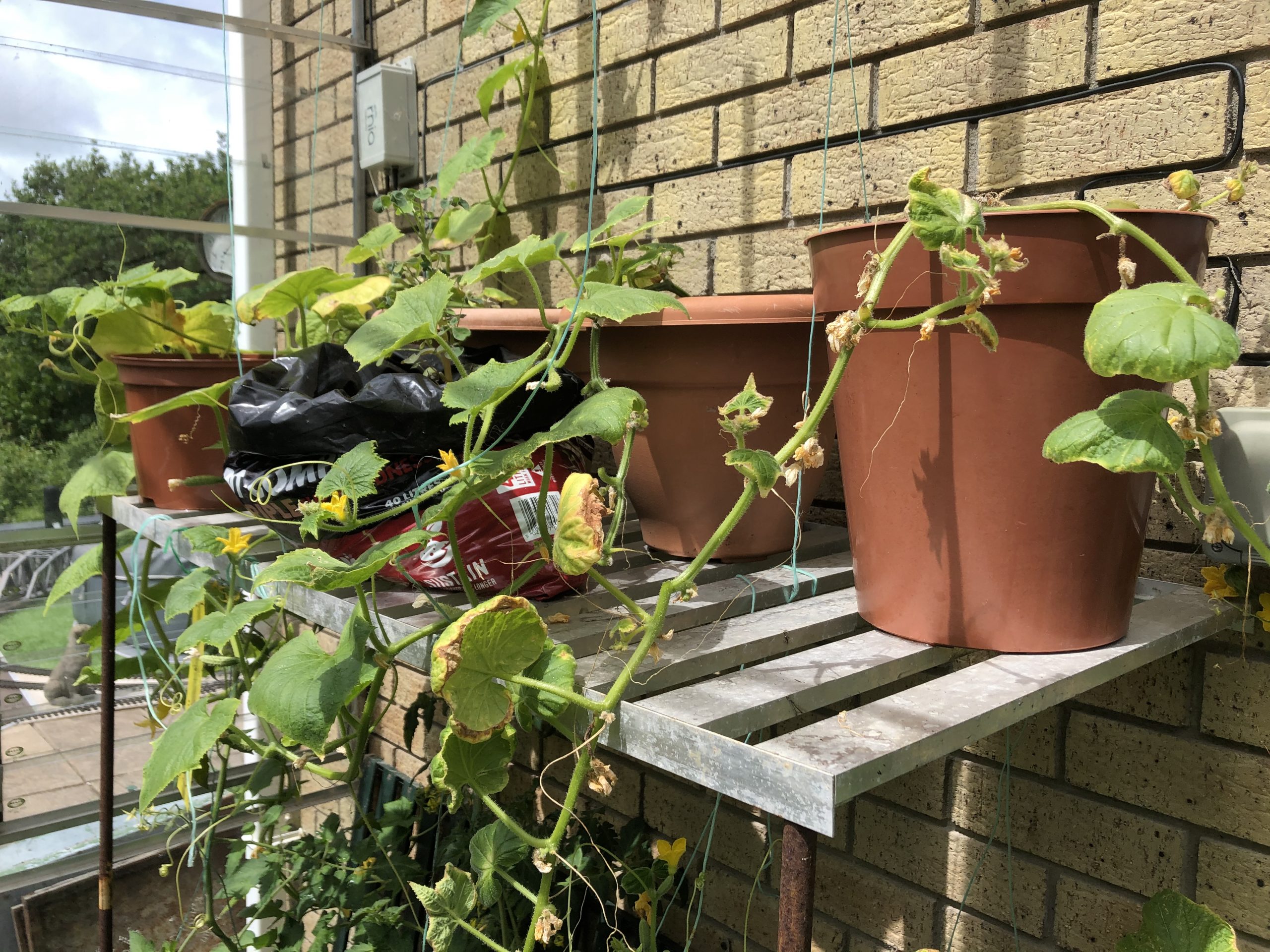
As they say – repeating the same action and expecting different results is a form of madness. So I started to look at other approaches. The likely issues were lack of water and / or food. so I looked at two options – hydroponics and “Autopots”. Hydroponics was particularly appealing as in summer 2020, it was difficult to obtain compost.
Hydroponics
The first stage was to start off the seeds without using compost or soil. I needed something to stop the seeds from actually drowning in the water, so I dug out a spare bit of recycled plastic wool insulation and cut it into small pieces, then I created a small slot to hold the seeds (edge down) in a tray of water in the greenhouse. Added a layer of tinfoil to keep the light out and the results were remarkably quick!

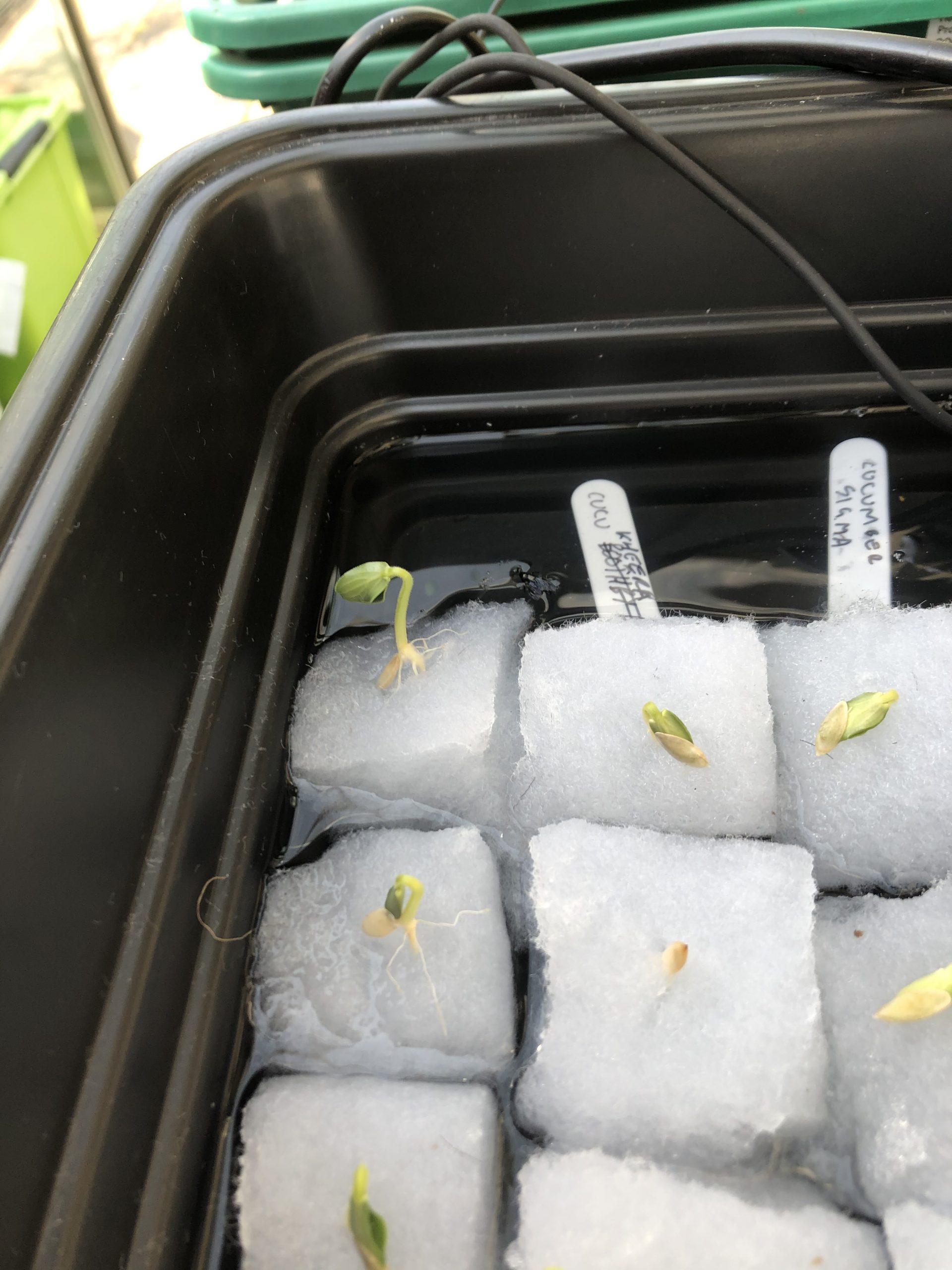
I managed to get little baskets for the seedlings in their plastic wool and I cut corresponding holes into a polystyrene sheet to keep them afloat. An aquarium air pump and stone were used to oxygenate the roots. The next stage was to move them into a proper hydroponics container which would be able to accommodate larger plants. Initially I kept the lid upside down until the roots had developed enough.

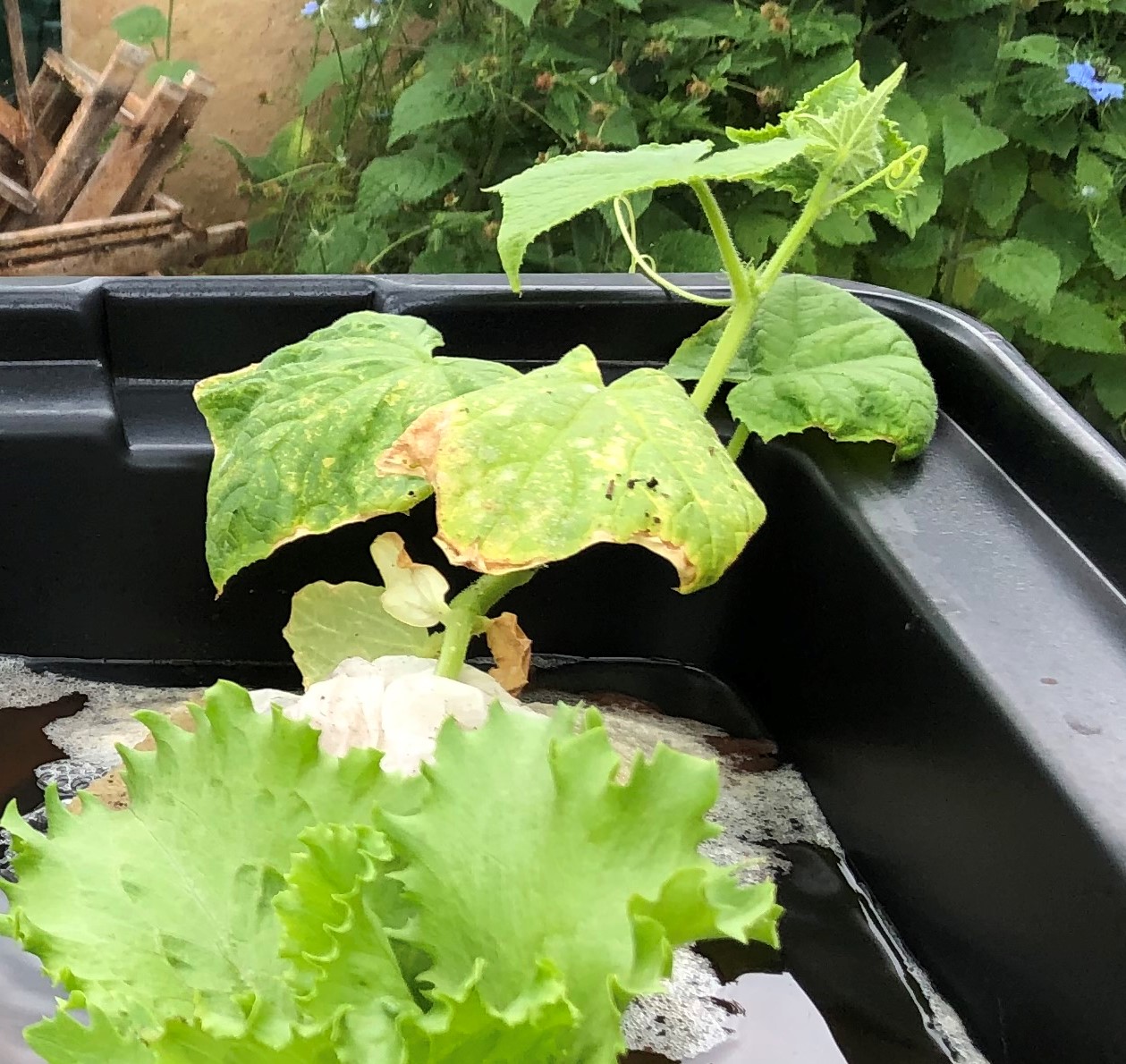
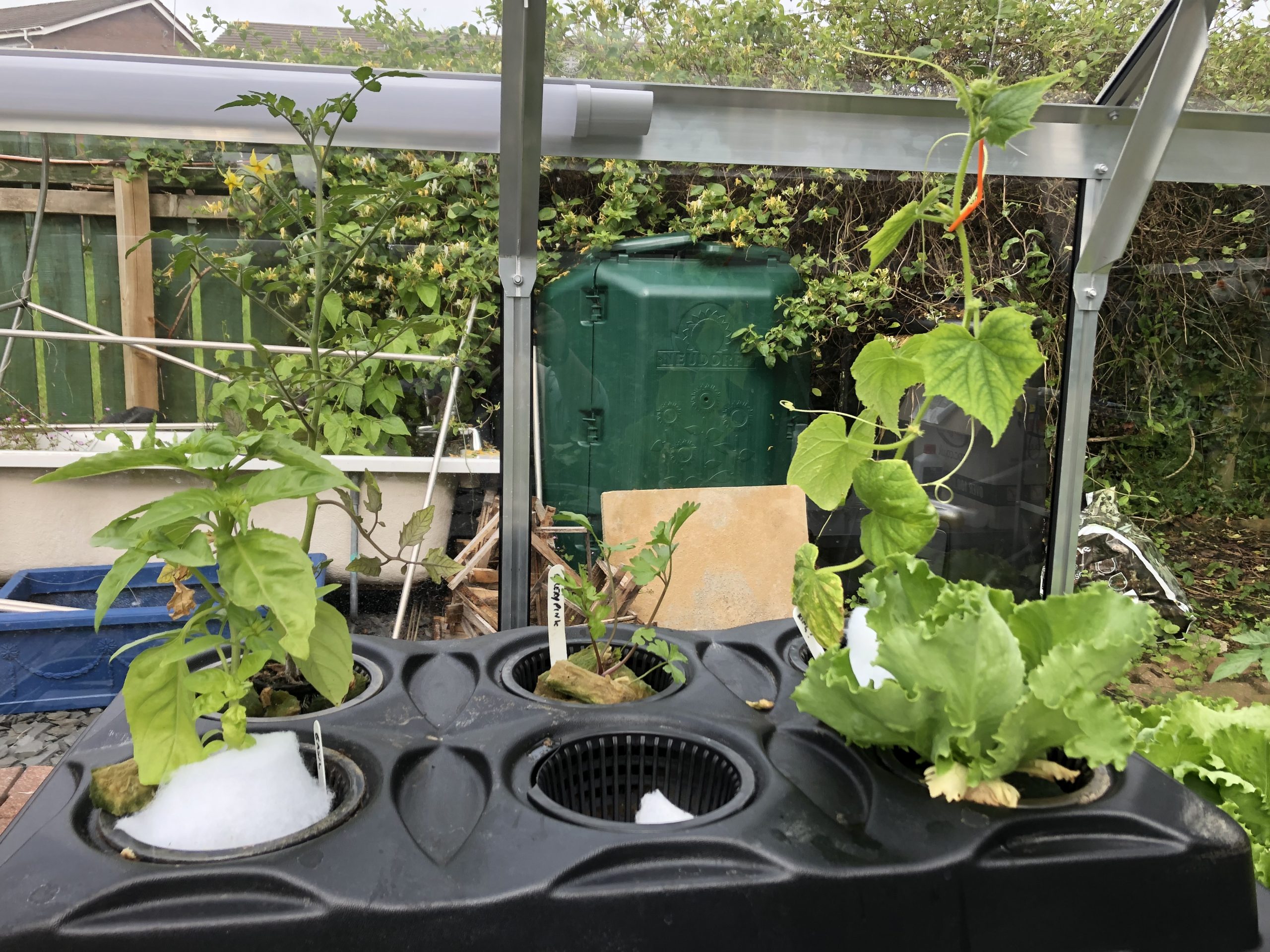
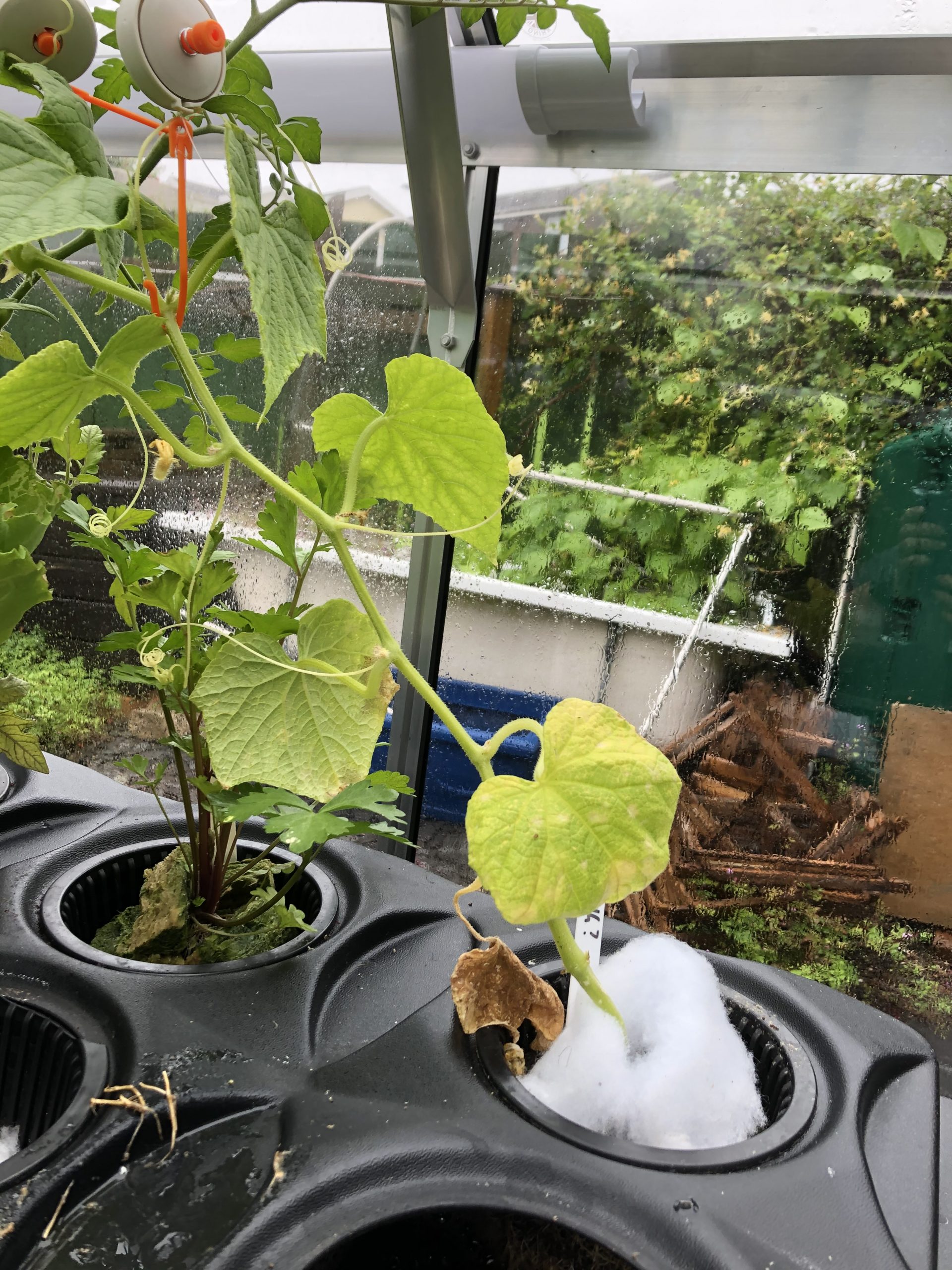
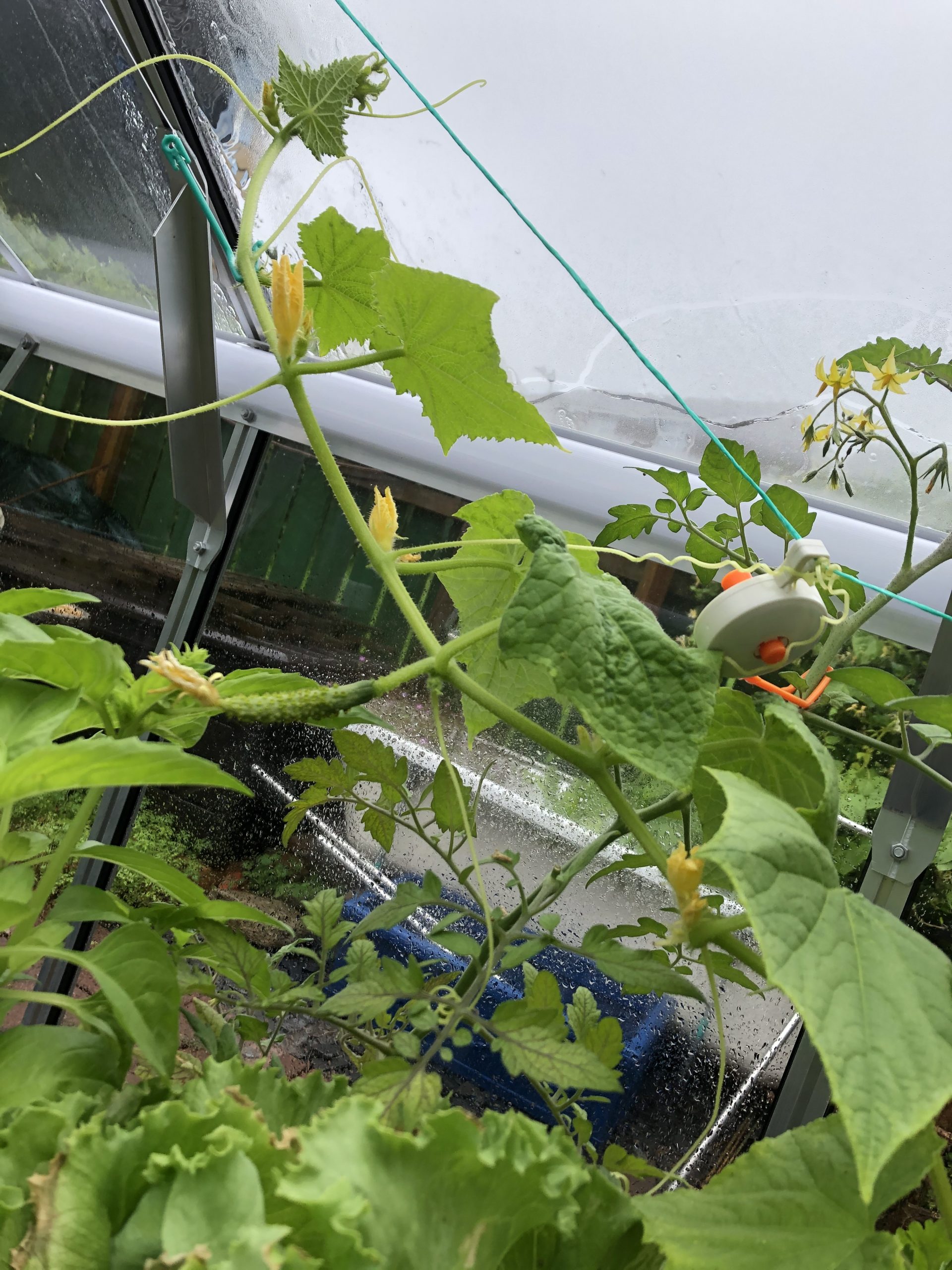
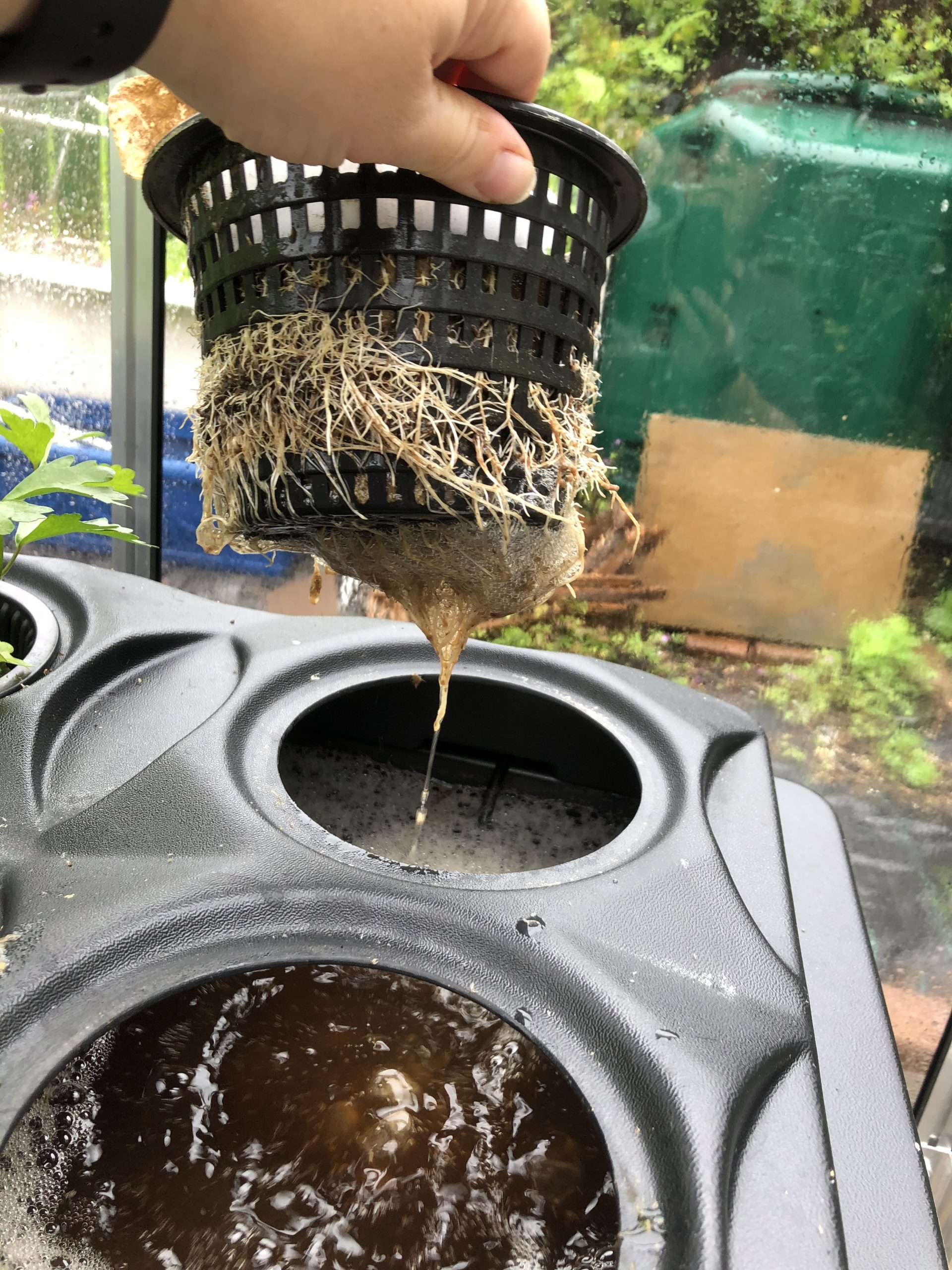
Maintaining the hydroponic tank was a real pain. I had to install a dechlorinator for the water, control the pH and control the nutrient levels. The aim pH for cucumbers is 5.5-6.5. Every morning I tested the pH and it had risen to about 8, so I’d adjust the pH to below 6. It was tricky to know how much pH adjuster to add. The routine of measuring, adjusting, letting it settle, measuring again and adjusting again became very time consuming – especially as I had plants in other containers all needing the same attention. If going into this permanently, I would have considered setting up a large reservoir to feed all the plants, but that increases the risk of transferring any infection across all the plants in the greenhouse. As well as pH, I also needed to maintain nutrient level – this is measured with an electroconductivity (EC) baton. This only needed adjusted on a weekly basis, so was much easier to deal with than pH.
Changing the solution (and cleaning all the slimy surfaces) was another issue. It took a while, used a lot of water and raised the question – what to do with the waste nutrient solution? I was using an organic nutrient for the hydroponics, so I used it to water potted plants.
The plant developed and looked healthy – it also gave a better harvest than the same cucumber type in a normal pot, but it was never as vigorous or productive as the plants in the Autopots!

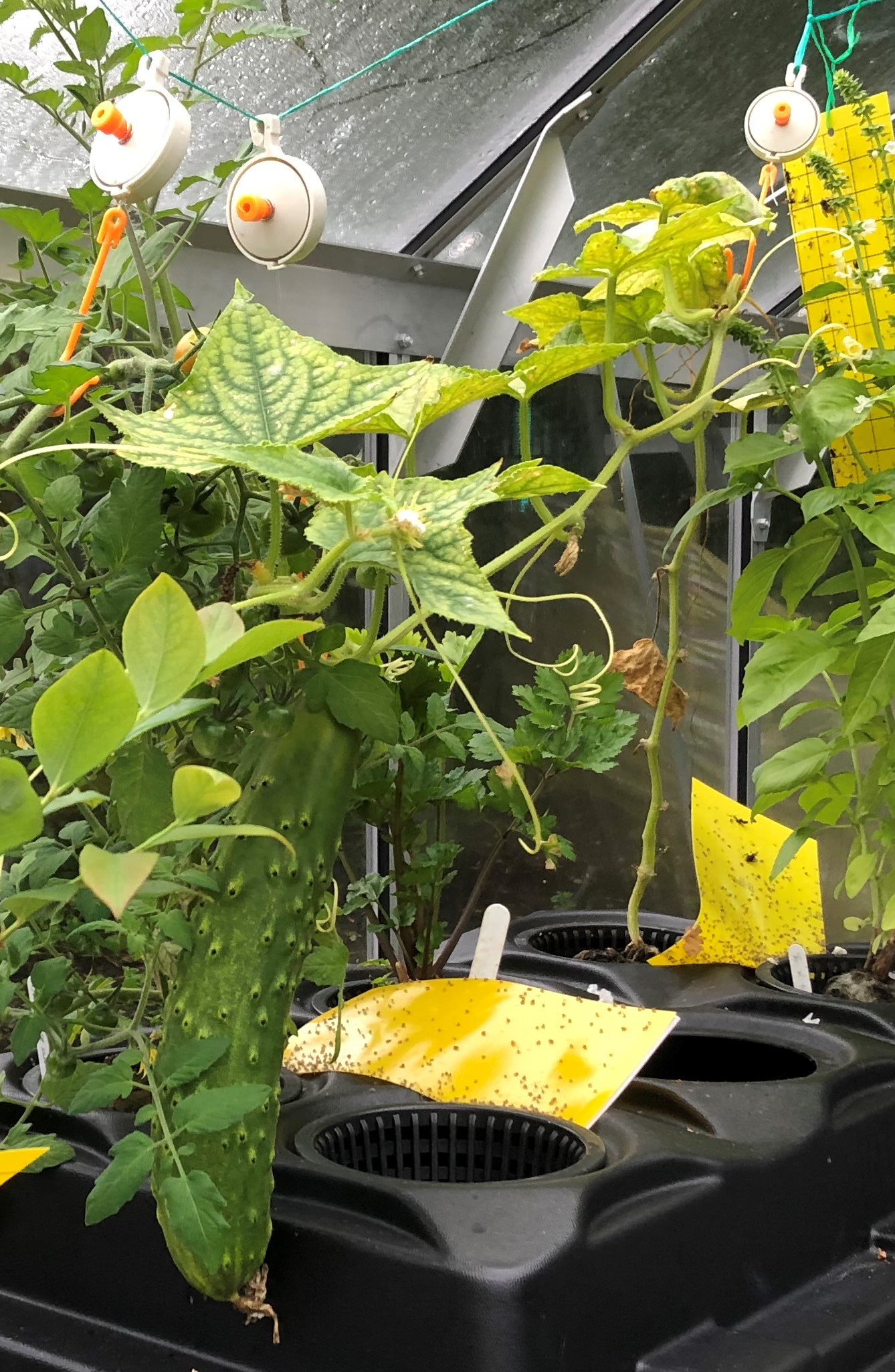
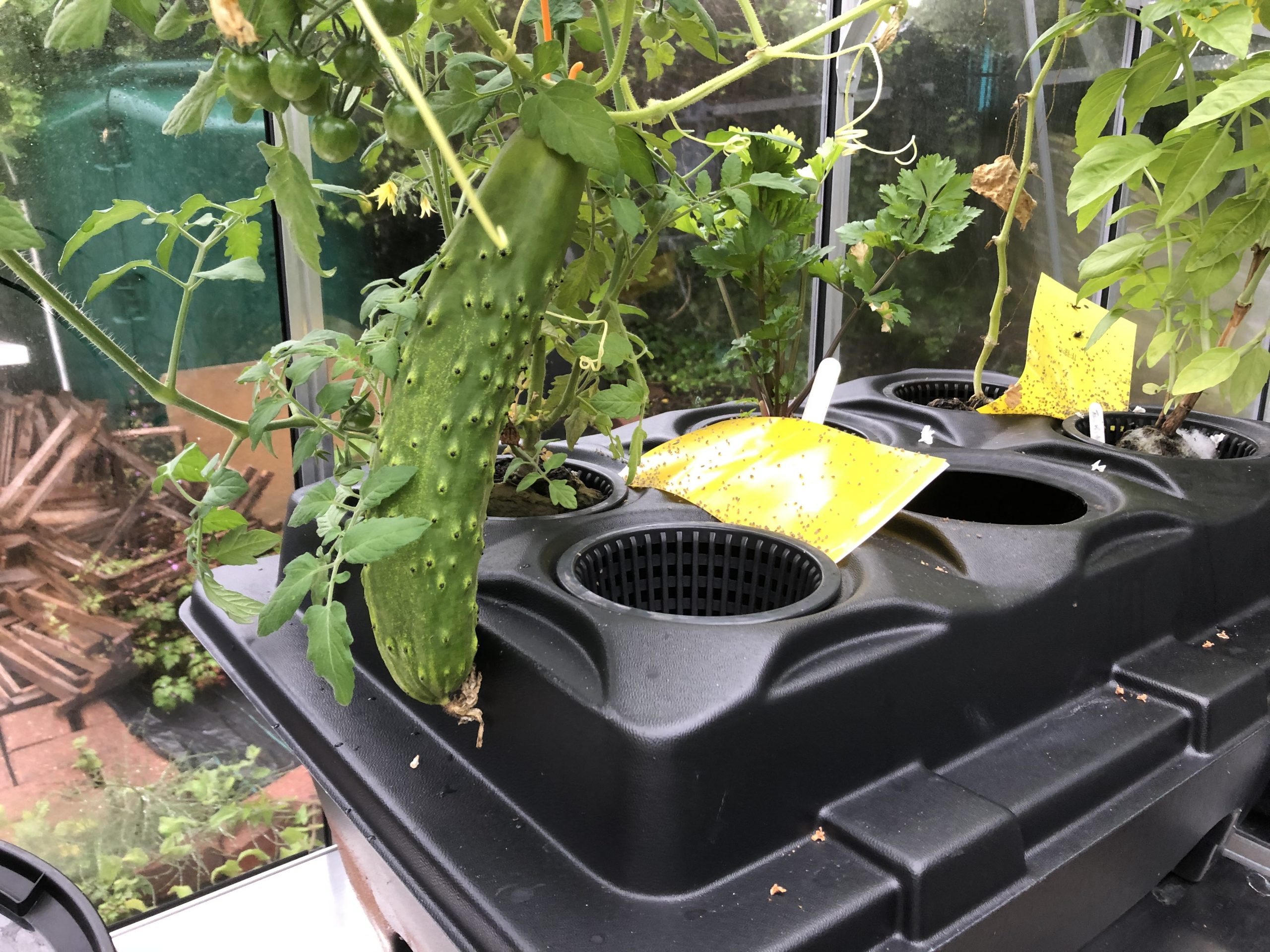
Autopots
The other system I tested was Autopots. I’m sure there are other similar systems, but Autopots was the one I found. This uses a reservoir filled with water and nutrient, so the EC baton came into play here too. A clever little valve system ensures that each plant gets a continuous supply without overflowing. A layer of little clay pebbles at the bottom ensures that the roots can suck up the nutrient properly without getting waterlogged. There are options for the substrate in the pot – I used a mix of coconut fiber waste with perlite. The substrate protects the roots so pH isn’t as critical here as it is for hydroponics. A recommended optional extra is to inject air into the bottom of the pot – so I tried this on some of the plants, but kept the air pump on a timer to avoid blowing cool air on the roots at night.

The seedlings were a bit slow developing as I misinterpreted the instructions. I knew it was important to encourage the plants to grow deep roots to get to the nutrient supply at the base, so after an initial soak I didn’t water the plants. That was a bit extreme and I’m lucky the plants survived in the warm weather. Now I give plants infrequent drenchings to prevent them setting back during this period.
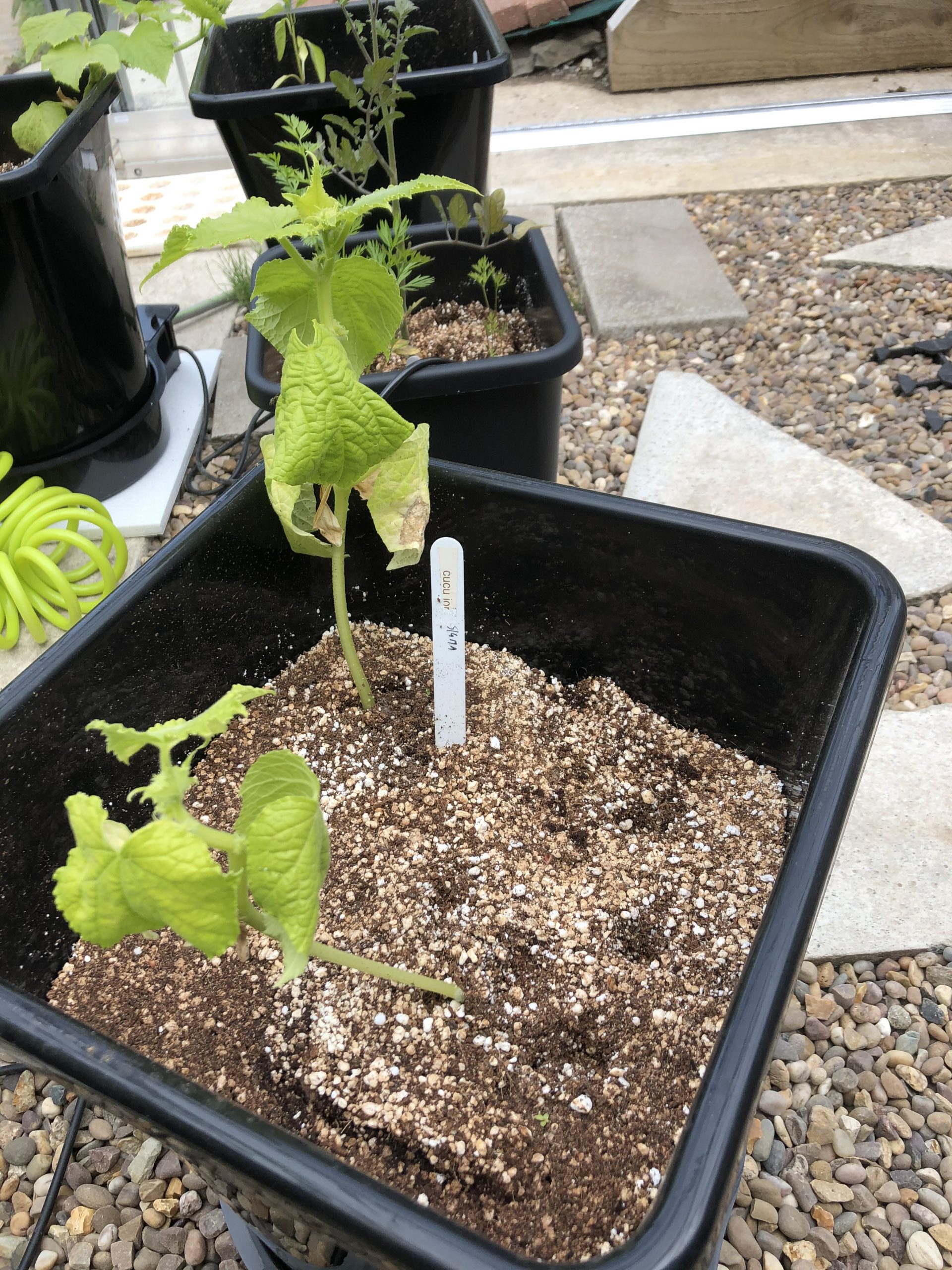
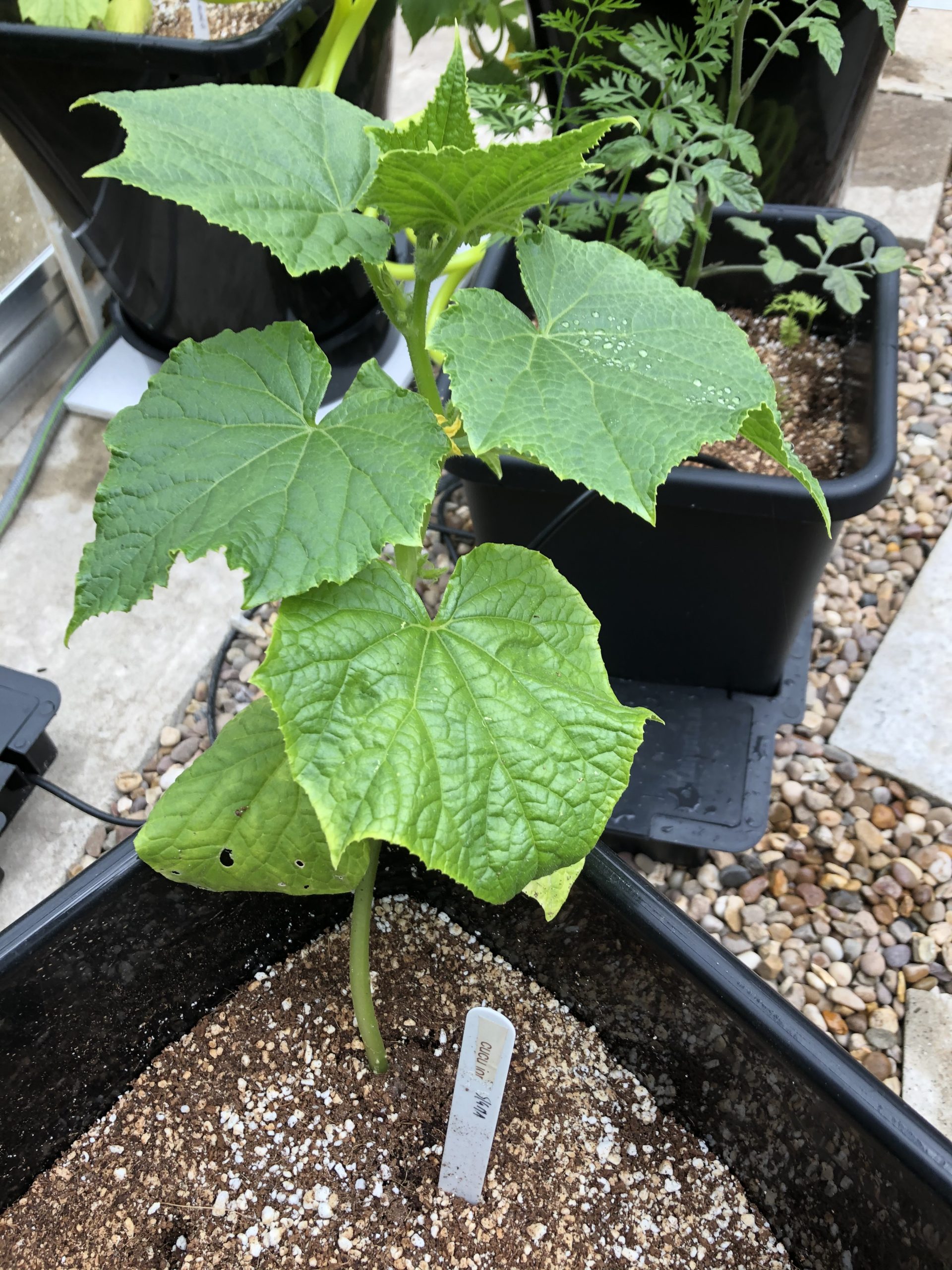
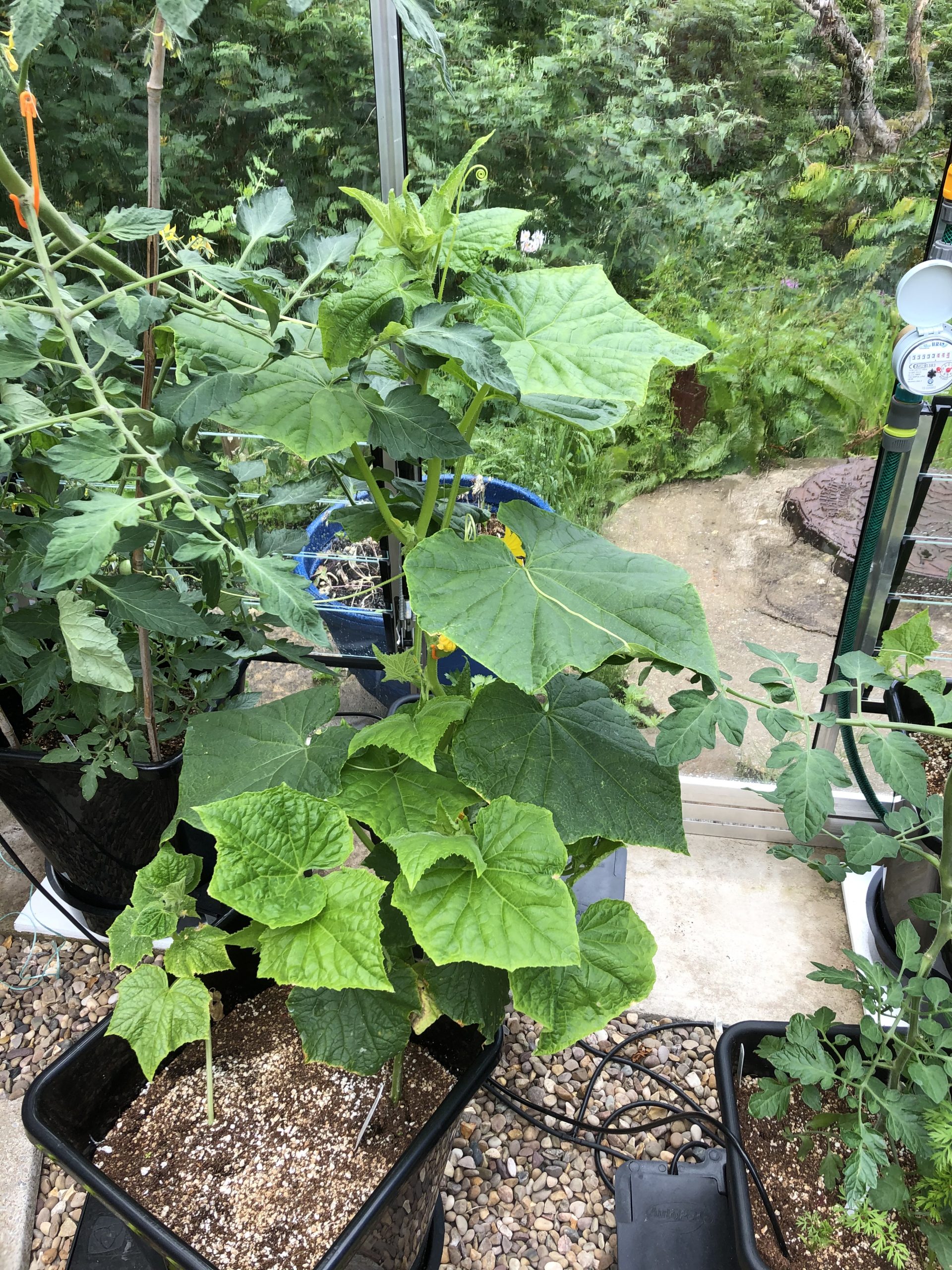
This setback delayed fruit maturing on the Autopot plants by 3 weeks compared to those in normal pots. However, the harvests from the Autopot plants were much bigger and lasted a month longer too. A key limitation of the Autopots is that it limits the choice of fertiliser. Any fertiliser which has particles which settle out (quite common in organic fertilisers) has the potential to clog the valves and result in blockages which would prevent the nutrient/water mix getting to the plant.


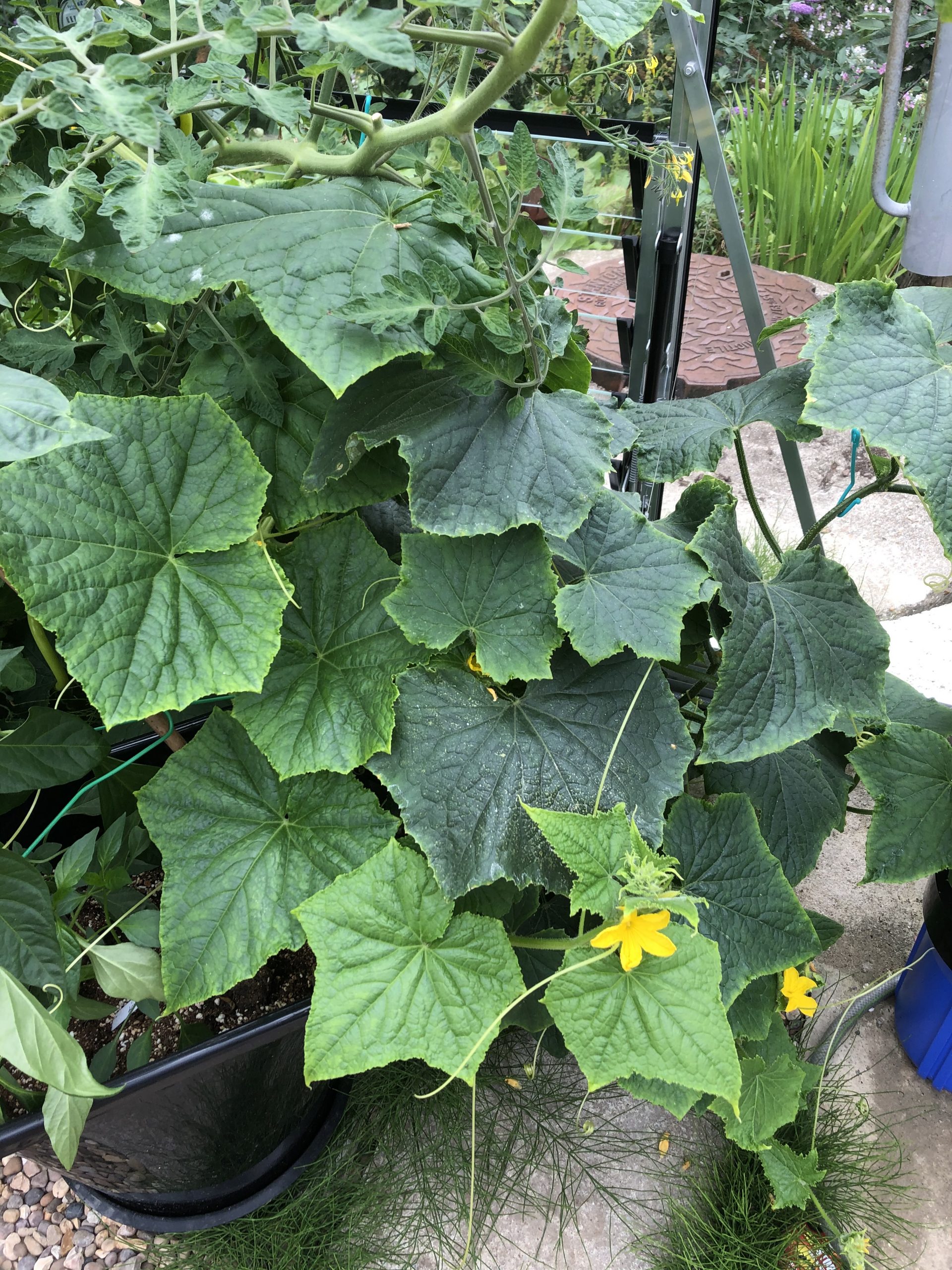
To prove it wasn’t a fluke, I used Autopots for cucumbers in 2021 and had another great harvest! Now I’m having to find recipes to use them all! I can heartily recommend the Paletas recipe on https://www.tablespoon.com/recipes/cucumber-chili-mexican-paletas/2c217d41-aff6-4c0d-a059-aa95d5176a7b This particular recipe is like a cucumber sorbet with a touch of chilli to give it a kick! Lovely as a desert and even better as an ice cube replacement in a decent gin!
Space Efficiency / Value for Money
My table on space efficiency is a bit more complex than usual due to the range of growing methods and varieties I’ve tried. Anything which isn’t annotated as using Autopot or Hydroponic was grown in ordinary pots of compost in the greenhouse.
| Crop | Year | Soil Area (m2) | Soil Depth (m) | Annual Harvest (kg) | Mass Yield (kg/m2.d) | £ yield (£/m2.d) | Calorie space* (m2) | Protein space* (m2) |
| Cucumber – Jordanian Autopot | 2021 | 0.09 | 0.3 | 1.019 | 0.0596 | 0.30 | 430 | 248 |
| Cucumber – Kheera | 2020 | 0.03 | 0.2 | 0.139 | 0.0438 | 0.21 | 1100 | 635 |
| Cucumber – Kheera | 2020 | 0.03 | 0.2 | 0.363 | 0.0763 | 0.38 | 631 | 364 |
| Cucumber – Kheera Autopot | 2021 | 0.09 | 0.3 | 2.637 | 0.1291 | 0.65 | 166 | 96 |
| Cucumber – Kheera Small Autopot | 2021 | 0.06 | 0.2 | 0.202 | 0.0142 | 0.07 | 1505 | 869 |
| Cucumber – King of the Ridge | 2020 | 0.06 | 0.2 | 0.374 | 0.0589 | 0.29 | 818 | 472 |
| Cucumber – King of the Ridge Hydroponic | 2021 | 0.05 | 0.2 | 0.519 | 0.0888 | 0.44 | 472 | 273 |
| Cucumber – Ridge | 2020 | 0.03 | 0.2 | 0.617 | 0.1693 | 0.85 | 247 | 143 |
| Cucumber – Ridge Autopot | 2020 | 0.09 | 0.3 | 9.528 | 0.5320 | 2.66 | 46 | 27 |
| Cucumber – Ridge Autopot | 2021 | 0.09 | 0.3 | 8.039 | 0.3935 | 1.97 | 54 | 31 |
| Cucumber – Sigmadew Autopot | 2020 | 0.09 | 0.3 | 8.545 | 0.4771 | 2.39 | 51 | 30 |
| Cucumber – Sigmadew | 2020 | 0.03 | 0.2 | 0.401 | 0.1193 | 0.59 | 381 | 220 |
| Cucumber – White Wonder Autopot | 2021 | 0.09 | 0.3 | 4.894 | 0.2396 | 1.20 | 89 | 52 |
There is an obvious increase in cropping with the Autopots (although not infallible as one of my Kheera plants didn’t do particularly well even with this support). Hydroponics also did better than the ordinary pots (although I’m sure that someone with more time available for watering and feeding could have made an equally good crop using pots in the greenhouse!). This year, I intend to be brave and try to grow cucumbers outdoors – they’ll have better soil, but less warmth – wish me luck!
Taste
Sigmadew is my absolute favourite cucumber – thin skinned, refreshing and a great cropper! I got my seeds through the Heritage Seed Library (you can become a member through https://www.gardenorganic.org.uk/hsl) and hope I’ll be able to get more of these seeds in the future! White Wonder is a close runner up to Sigmadew.
Ridge was a really productive variety, although a I recommend light gloves for harvesting as they’re a bit prickly. King of the Ridge was similar (although a bit more curly!). Kheera is an unusual cucumber (another from the Heritage Seed Library) and wasn’t to my taste, but I’m sure lots of other people will love it!